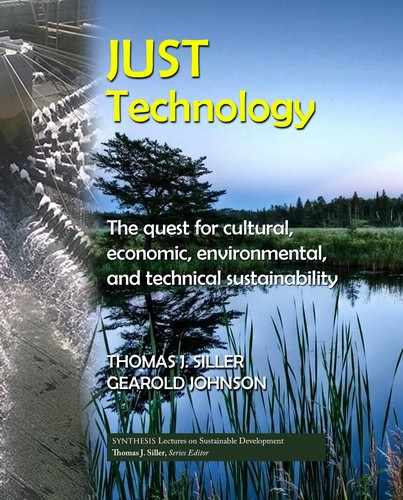34 5. QUESTION 1
as clients but is meant to broaden the context of the problem to include cultural, economic, and
environmental considerations from the beginning of the process.
e essence of the “question” of this chapter is to establish the motivation for a solution on
two levels. First, is a solution necessary? is may seem to be an obvious question to ask; in fact,
it is often skipped, or maybe more accurately taken for granted as having been answered with the
affirmative. As engineers we often accept that a problem exists, and our expertise is necessary
to solve problems, not to define them. e second deals with the nature of the problem under
consideration. is is where we need to push hard to develop a deeper understanding of the
real problem at hand. To help provide this deeper understanding it is important to address the
three aspects in our first Just Technology question above: is the problem (1) lasting, (2) serious,
and (3) certain? In this chapter each of these questions is explored in detail. To borrow a phrase
from Lagemann and Lewis [48] our purpose is to get engineers to:
“... focus on the big problems of the world, problems beyond single human lives or any in-
dividual’s home community.”
5.2 LASTING
e question: “Is a problem lasting?” relates to whether the problem under consideration is a
long-term concern or something short-term? Of course, to properly answer this we need to
establish clear boundaries of what constitutes short vs. long-term concerns. Most definitions of
sustainability refer to an open-ended future without a definite boundary. For our purposes we
might consider a problem lasting if it extends beyond one or two generations.
Consider, for example, the growing concern for climate change. Put aside for the mo-
ment whether it is anthropogenic and focus on its potential to be a lasting problem. Predictions
about how long greenhouse gases will stay in the atmosphere range over millennia instead of
years [49]—time frames beyond a generation are clearly lasting problems! Solomon et al. [49]
make an even more important point about the lasting aspect of greenhouse gases: e warming
effects from the gases persist longer than the elevated concentrations of the gas in the atmo-
sphere exist. Which leads them to the following warning.
“Approaches to climate change mitigation options through reduction of greenhouse gas or
aerosol emissions therefore should not be expected to decrease climate change impacts as
rapidly as the gas or aerosol lifetime, even for short-lived species;”
e key point they make is that the problem can outlast the originating or driving source
creating the problem. is may then seem to be an obvious case of a lasting problem but re-
member we must also establish the other two conditions: its seriousness and the certainty with
which it is known—that will come later.
For now, let’s take another point of view on lasting problems by looking at one that seems
to persist despite numerous technical advances related to its management: clean drinking water.
e U.S. National Academy of Engineering [50] lists access to clean drinking water as a focal
..................Content has been hidden....................
You can't read the all page of ebook, please click here login for view all page.
